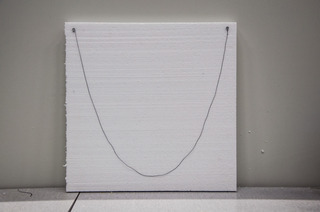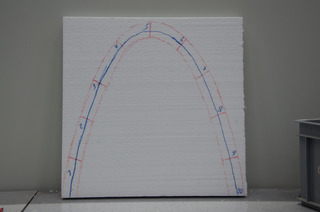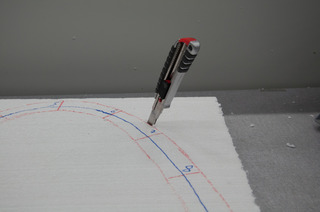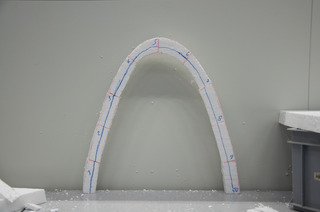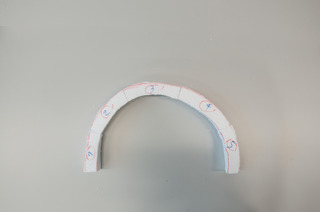Structural Design I
The courses Structural Design I and II explain the fundamentals of how structures function. These courses put great emphasis on studying the relationship between the form of a structure and the internal forces within it by means of graphic statics.
Exercise 4: Arches
This exercise involves arches and thrust lines. As it is the case for suspension cables, the arch shape also follows the load (thrust line). Therefore, all previous methods are also applicable to an arch. What is new are the initial investigations on support reactions.
Intro: Arches and thrust lines
Hands-on exercise to create and study thrust lines.
Arched structures are continuously curved support elements, which transfer loads primarily via compressive forces. When the shape of the arch is the inverse shape of a catenary, the arch only experiences compressive forces. The thrust line in the arch is the mirror of the string line.
Step 1
Fix the string with the two nails on the Styrofoam plate and let it hang freely (see Figure 1). The free hanging string takes the shape of a parabola, which also is the shape of the thrust line (see Figure 2).
Step 2
Arched structures require a large enough cross section to be stable. The more the axis of the arch approaches the shape of the thrust line, the smaller the needed cross-sectional height h of the arc. Draw an arch whose axis corresponds to the thrust line. Divide this arch into similar segments and number them (See Figure 2).
Step 3
Cut the individual segments of the arch out of the Styrofoam plate and build the arch with this segments (see Figure 3 and 4).
Since the arch shape follows the thrust line, only compression forces occur. As a result, the arch is stable. The minimum and maximum possible thrust lines are shown in the interactive drawing.
Interactive drawing: Minimum and maximum thrust lines in a masonry arch (http://www.block.arch.ethz.ch/eq/drawing/view/16)
Step 4
Draw a circular arch on the remaining piece of the Styrofoam. Number the sections, cut them out and construct the arch (Figure 5 and 6). This arch cannot be brought to be stable, because the thrust line is located outside its shape.
